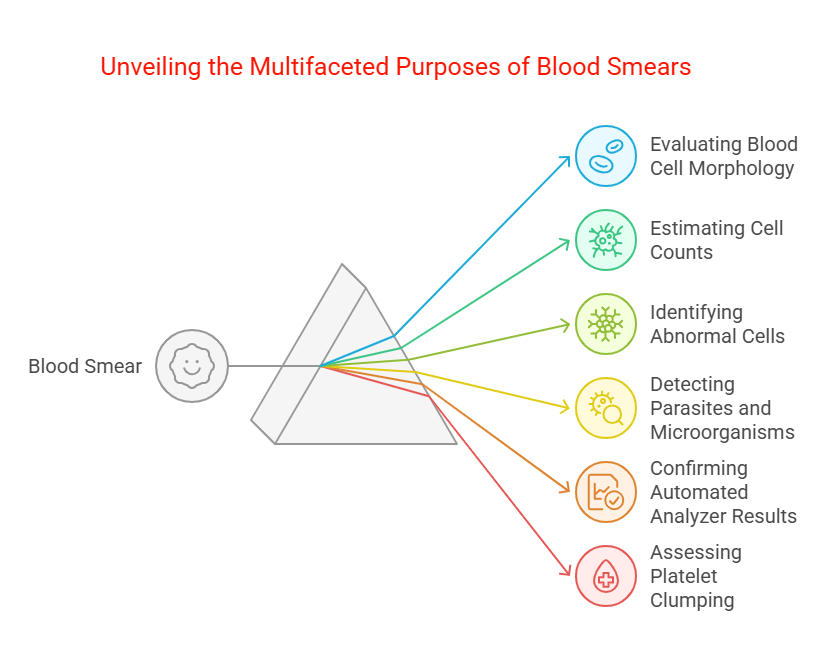This test is aslo known as Peripheral Blood Smear, Blood Film, Peripheral Blood Film, Blood Slide & Microscopic Blood Examination.
A blood smear is a laboratory examination of blood cells under a microscope. It is used to evaluate the size, shape, and number of different types of blood cells, including red blood cells (erythrocytes), white blood cells (leukocytes), and platelets (thrombocytes). This test can help diagnose a variety of conditions, including:
- Anemia (low red blood cell count)
- Leukemia (cancer of the blood cells)
- Infections
- Blood clotting disorders
- Other blood abnormalities

Input your data
A blood smear test is a versatile diagnostic tool that is ordered in a wide range of clinical situations. It is particularly useful when a CBC reveals abnormalities, when a physician suspects a blood-related disorder, or when a patient presents with unexplained symptoms. By examining the number and morphology of blood cells, a blood smear can provide valuable information that aids in the diagnosis, treatment, and monitoring of various medical conditions.

Pre-Test Preparation
Generally, a blood smear test requires minimal preparation. However, it's crucial to inform your healthcare provider about your medical history and any medications you are currently taking.
1. Inform Your Healthcare Provider
- Medical Conditions: Disclose any existing medical conditions, especially bleeding disorders, anemia, or immune system disorders.
- Medications: Provide a complete list of all medications, including prescription drugs, over-the-counter medications, vitamins, and herbal supplements. Some medications can affect blood cell counts or morphology.
- Allergies: Inform your healthcare provider of any allergies, particularly to antiseptics or latex.
- Previous Blood Tests: If you have had recent blood tests, especially complete blood counts (CBCs), inform your healthcare provider. This information can provide a baseline for comparison.
2. Fasting (Usually Not Required)
- In most cases, fasting is not required for a blood smear test. You can eat and drink normally before the test.
- However, if the blood smear is being performed in conjunction with other blood tests that require fasting, your healthcare provider will provide specific instructions. Follow their instructions carefully.
3. Hydration
- Staying adequately hydrated can make it easier to draw blood. Drink plenty of water in the days leading up to the test.
4. Clothing
- Wear comfortable clothing that allows easy access to your arm. Short sleeves or sleeves that can be easily rolled up are ideal.
5. Anxiety
- If you are anxious about having your blood drawn, inform the healthcare professional performing the test. They can take steps to minimize your discomfort, such as using a smaller needle or applying a topical anesthetic.
None
Dummy Test
Type the specimeny type like blood, urine or any other specimen required.
Sample report in a format
No reviews found


